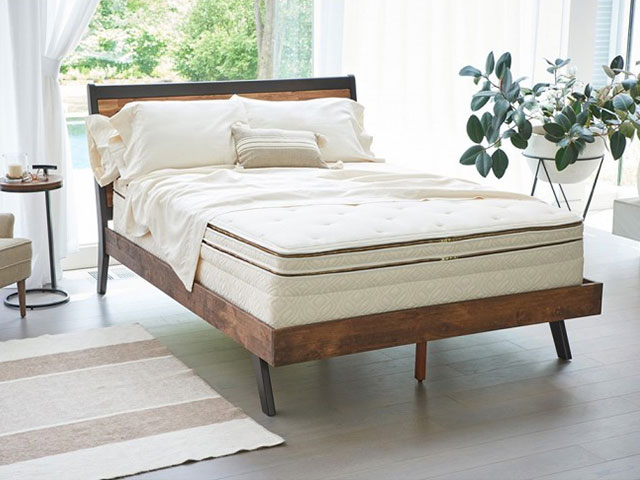Extend the Life of Your Mattress
Your mattress is more than just a place to sleep. It’s a vital part of your overall health and well-being, affecting your sleep quality, posture, and comfort. While a mattress doesn’t last forever, with proper care, you can extend its lifespan significantly. Given that a good-quality mattress is an investment, learning how to preserve it for as long as possible is a smart financial decision.
In this guide, we’ll walk through actionable tips on how to keep your mattress in top shape, prolonging its life and ensuring you get the best sleep possible.
1. Use a Mattress Protector
The first and arguably most effective step in extending the life of your mattress is to invest in a high-quality mattress protector. These protectors act as a barrier against liquids, dust mites, allergens, and other contaminants. Over time, these substances can degrade the materials in your mattress, causing it to wear out prematurely.
A waterproof mattress protector can be especially beneficial. Even though spills may not happen often, sweat, oils from your skin, and accidental leaks can seep into the mattress over time. Protectors are easy to clean and inexpensive compared to replacing a mattress, making them a must-have.
2. Rotate and Flip Your Mattress Regularly
Mattresses are subject to wear and tear over time, particularly in the areas where your body weight is concentrated. To combat uneven wear, rotating your mattress 180 degrees every three to six months is essential. This simple act ensures that different parts of the mattress bear your weight over time, preventing sagging in specific areas.
If your mattress is flippable (this is more common with older models and some newer ones), you should also flip it when you rotate it. However, many modern mattresses, especially those made with memory foam, are designed with a specific top and bottom, so always check the manufacturer’s instructions before flipping.
3. Provide Proper Support
Just as crucial as the mattress itself is the foundation or bed frame you place it on. If your mattress isn’t properly supported, it can start to sag and lose its shape over time, diminishing its comfort and durability.
Check your mattress warranty or manufacturer’s recommendations to see what kind of foundation works best. For some, a box spring or a solid platform may be ideal, while for others, slats may be better suited. Ensure that the foundation or bed frame has enough legs or a center support beam, especially for larger mattresses like queens or kings, to distribute weight evenly and maintain stability.
4. Keep Pets Off the Bed
As much as you love cuddling with your furry friends, letting pets on the bed can take a toll on your mattress. Not only do pets shed fur, but their claws can puncture the fabric, and they may bring in dirt, pests, and other allergens that are harmful to the mattress material. In addition, pet accidents, no matter how rare, can cause staining and lead to odors that are difficult to remove.
If you must let your pets sleep with you, consider placing a protective blanket or sheet over the bed to shield the mattress.
5. Regularly Clean Your Mattress
It’s easy to forget about cleaning your mattress, but regular maintenance can go a long way in extending its life. Vacuuming your mattress every few months helps remove dust, dead skin cells, and other debris that can accumulate over time.
Spot cleaning stains with a mild detergent or using a mixture of baking soda and water can also prevent permanent marks. After cleaning, let your mattress dry completely before making the bed again to avoid mold or mildew growth.
For an extra level of care, sprinkle baking soda over the surface of your mattress once in a while and leave it for a few hours to absorb moisture and odors before vacuuming it off.
6. Don’t Jump on the Bed
This may seem like an obvious point, but many people are guilty of letting kids or pets jump or bounce on their mattress. Doing so can weaken the mattress coils or cause foam layers to compress unevenly, both of which reduce the mattress’s support and comfort.
Even if the bed seems like a fun play area for children, it’s important to explain the risks and discourage jumping to prolong the mattress’s longevity.
7. Control the Room’s Climate
Environmental factors like temperature and humidity can impact your mattress. Extreme temperatures, particularly heat, can cause some mattress materials to degrade faster. Foam mattresses, in particular, are sensitive to heat. Over time, exposure to high temperatures can cause the foam to lose its elasticity and structure.
Humidity, on the other hand, can create a breeding ground for mold and mildew if your mattress doesn’t get a chance to air out. To prevent this, ensure that your bedroom is well-ventilated and consider using a dehumidifier if you live in a particularly humid climate. Keeping the room at a moderate temperature and humidity level will help maintain the integrity of your mattress.
8. Avoid Sitting on the Edge Regularly
Mattress edges are more vulnerable to wear than the middle, especially if you often sit on the same spot while getting dressed, putting on shoes, or just hanging out. Over time, this repeated pressure can cause the edges to lose their support, sag, and fray.
If you need to sit on the bed, try to vary the spots where you sit to distribute the pressure evenly across the mattress.
9. Air Out Your Mattress Regularly
Giving your mattress a chance to breathe by airing it out can help release any trapped moisture, dust, or odors. Every few months, strip the bedding and leave the mattress uncovered for a few hours, ideally in a well-ventilated room or near an open window. Doing this will help eliminate moisture buildup, which can otherwise lead to mold, mildew, and dust mites.
10. Follow Manufacturer’s Care Instructions
Every mattress is unique, and different materials require different types of care. Always refer to your mattress’s care label or manufacturer’s instructions for specific maintenance tips. Following their guidance will not only help you avoid damage but will also ensure you don’t accidentally void your warranty.
For instance, some memory foam mattresses may require more frequent rotations than traditional innerspring models, while some mattresses may come with specific cleaning instructions.

11. Replace Bed Linens Regularly
Washing your sheets, pillowcases, and blankets frequently is another small but significant step in mattress care. Linens collect dust, sweat, and oils from your body, all of which can seep into your mattress over time. Changing your bedding at least once a week, or more if you sweat heavily, will keep your mattress cleaner and fresher for longer. Please take a moment to visit their page to get more tips about removing dust mites from mattress.
12. Know When to Let Go
Despite your best efforts, no mattress lasts forever. Even with top-notch care, mattresses generally need replacing after 7 to 10 years. If you find yourself waking up with aches and pains or notice that your mattress is no longer providing the same level of support and comfort, it’s time to consider a replacement.
Continuing to use a worn-out mattress can lead to poor sleep quality, back pain, and other health issues. While extending your mattress’s life is important, knowing when to invest in a new one is just as crucial for your well-being.
Conclusion
By implementing these simple yet effective practices, you can significantly extend the life of your mattress, keeping it comfortable and supportive for years to come. Regular maintenance, cleaning, and care can protect your investment, saving you from the inconvenience and expense of premature mattress replacement. With the right care, your mattress will support your sleep and health for many restful nights ahead.
